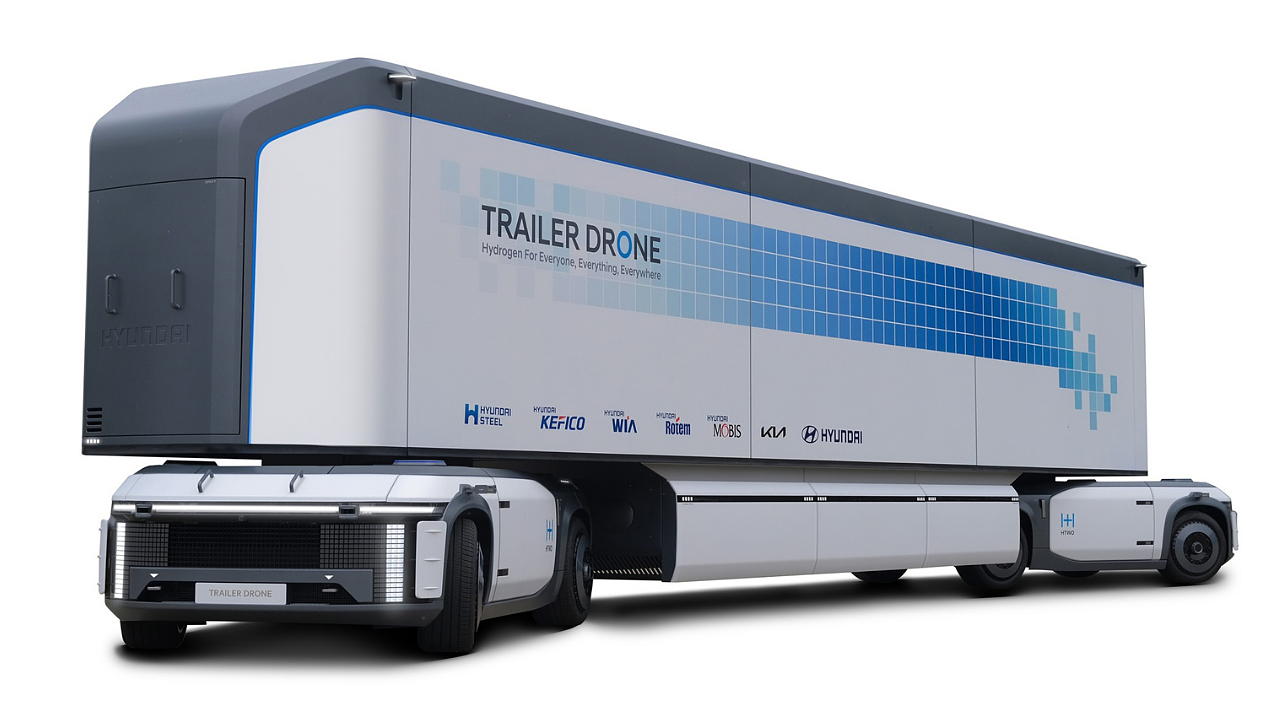
At the Hydrogen Wave global online forum held on Tuesday, Hyundai Motor Group presented its plans to popularise hydrogen by 2040 by introducing new technologies and mobility solutions in transportation and other industrial sectors.
Kicking off with an online presentation, Euisun Chung, Chairman, Hyundai Motor Group, said, “Hyundai Motor Group’s vision is to apply hydrogen energy in all areas of life and industry such as our homes, work-places and factories. The goal is to make hydrogen readily used for everyone, everything, and everywhere. We want to offer practical solutions for the sustainable development of humanity, and with these breakthroughs, we aim to help foster a worldwide Hydrogen Society by 2040.”
The global online forum was followed by a physical ‘HydroVILLE’ exhibition, presenting the newly introduced applications and concepts.
Since the development of its first FCEV in 1998, the Group has been preparing for the future of hydrogen. In 2013, the Tucson FCEV (ix35 Fuel Cell) was introduced, opening the door to the mass production of FCEVs. Then, in 2018, the company launched the next-generation fuel-cell SUV, NEXO, and the world’s first heavy-duty fuel cell truck, XCIENT Fuel Cell, in 2020.

Hydrogen Vision 2040
The vision for the group is that by 2040 hydrogen energy will be used not only for transportation but will also be applied to broader areas of industries and sectors. It aims to make hydrogen energy available to ‘Everyone, Everything and Everywhere,’ the company said.
As part of its strategy, the group has already started mass-producing a vastly improved version of the current XCIENT Fuel Cell, the world’s first mass-produced fuel cell heavy-duty truck. It is also developing a tractor based on the XCIENT Fuel Cell that will be released in 2023.
During Hydrogen Wave, it also unveiled the ‘Trailer Drone’ concept, a hydrogen-powered container transportation system capable of operating fully autonomously, with a double e-Bogie configuration.
Fuel cell systems are being used commercially for vehicles such as the NEXO SUV, Elec City Bus and XCIENT Fuel Cell truck and have the potential for deployment across diverse applications by 2040, including high-performance vehicles urban air mobility, robots, aircraft and large ships, the company said.
Third-generation Fuel Cell System
Currently under development, the third-generation fuel cell stack will succeed NEXO’s current stack. The group showcased two power versions of the third-generation fuel cell stack at the event: 100kW and 200kW. The 100kW stack has reduced in size by 30%, making it 70% in size from the current generation stack to make it easier to apply to different vehicle types and applications. The 200kW version has been designed for commercial vehicle applications and is similar to the current NEXO system, but the power output has doubled.
Trailer Drone
The Trailer Drone concept is a hydrogen-powered container transportation system capable of operating fully autonomously. With the number of intelligently packaged hydrogen tanks tailored to the journey profile, the flexible and efficient Trailer Drone ensures more than 1,000km of sufficient range from a single charge, comparable to existing container transportation systems.
Fuel Cell e-Bogie
The Fuel Cell e-Bogie sits under the container just like a rail bogie and is a fully enclosed system with fuel cell propulsion and fully independent four-wheel steering. The Trailer Drone concept requires two fuel cell e-Bogies, allowing for unprecedented manoeuvrability through sideways movement. The Trailer Drone can move autonomously through portside operations and tight urban environments. Efficiency is further boosted by the ‘Cluster Mode’, enabling multiple Trailer Drones to travel together in an almost train-like configuration.
Rescue Drone
The Rescue Drone is a new concept mobility solution that combines with a Fuel Cell e-Bogie to create a flying drone that can be operated remotely and autonomously for critical operations such as fire-fighting and life-saving. It features an independent steering system for in-place turning manoeuvres and ‘crab-walk driving. It can also carry out missions via images transmitted from drones mounted on the vehicle exterior and achieves a 450 to 500km driving range from a single charge.
H Moving Station
The H Moving Station is a heavy-duty vehicle equipped with charging facilities for FCEVs. This portable hydrogen refuelling station ensures convenience and charging options in areas with limited hydrogen refuelling stations. The RHGV - Rescue Hydrogen Generator Vehicle supplies power to vehicles in urgent assistance in remote, off-road areas. The portable electric vehicle charger offers a single-phase 220V and 3-phase 380V simultaneous power supply.